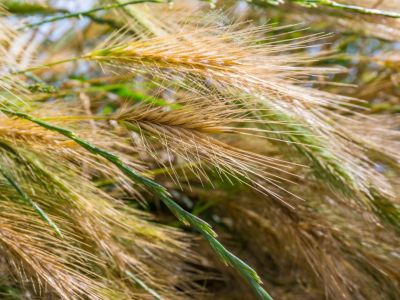Ornamental grasses offer ease of care and versatility to the landscape. Pennisetum, or fountain grasses, come in many species and are a hardy variety, suited to USDA zone 5. The fountain grass ‘Little Honey’ is a warm season grass and not as hardy, only suited to USDA zone 6.
About Pennisetum Little Honey
Little honey ornamental grass is a dwarf fountain grass that only gets 12 inches (30 cm.) tall and about a foot (30 m.) wide. It is a warm season plant which dies back in winter, although the inflorescences will still persist. The narrow, variegated green leaves arch out from the center of the plant, this characteristic gives it the name fountain grass. Little honey fountain grass foliage turns golden yellow in fall and finally brown as cold temperatures near. The flower or inflorescence is a pinkish white, spiky spray. Towards the end of the growing season the spike will turn brown as seeds ripen. This variety of fountain grass self-sows very easily.
Growing Fountain Grass Little Honey
Pennisetum little honey is a sport of the cultivar ‘Little Bunny.’ It is notable for its small size and white and green foliage. Fountain grasses prefer well-draining soil but aren’t particularly picky about the texture. They are tolerant of either wet or dry sites and can be used in a rain garden. Mulch around the plant after installing and water in well. Keep newly planted grasses moist and free of weeds. While not necessary, a spring feeding of a high nitrogen fertilizer can improve plant health in low nutrient soils.
Little Honey Care
Outside of watering the plant and keeping weeds away, there is little to do. The fountain grass has few pest problems and no serious diseases. It is even verticillium wilt resistant. Birds like to eat the flower seeds and the plant can provide important cover for other wildlife. Cut back the brown foliage in late winter to early spring to allow new foliage access to light and air as well as for improved appearance. Use little honey in containers, mass plantings, or as stand-alone specimens.
